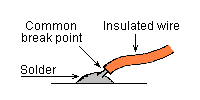dabby21
Advanced Member level 4
- Joined
- Aug 8, 2011
- Messages
- 114
- Helped
- 0
- Reputation
- 0
- Reaction score
- 0
- Trophy points
- 1,296
- Location
- Philippines
- Activity points
- 2,232
Sir,
I agree with you, but since im on short interms of money right now i can't buy DMM asap but the DMM that i will borrow from a friend is also my groupmates, so i think ill borrow it from him until the project will successful...
I have just noticed, while im charging on sir, the transformer getting hot. ive doubled checked the connection on your circuit sir before charging the battery and testing the circuit itself, ill stay the circuit on for maybe 12 hours or more for me to see if the battery can back up enough the circuit. Ill send some progress report tomorrow sir regarding the UPS, hopefully no troubles will be face.
---------- Post added at 15:15 ---------- Previous post was at 13:46 ----------
Question again sir, if the mains are off and the battery will back up the circuit/ system, will the LED indicator on the circuit will still be on?
I agree with you, but since im on short interms of money right now i can't buy DMM asap but the DMM that i will borrow from a friend is also my groupmates, so i think ill borrow it from him until the project will successful...
I have just noticed, while im charging on sir, the transformer getting hot. ive doubled checked the connection on your circuit sir before charging the battery and testing the circuit itself, ill stay the circuit on for maybe 12 hours or more for me to see if the battery can back up enough the circuit. Ill send some progress report tomorrow sir regarding the UPS, hopefully no troubles will be face.
---------- Post added at 15:15 ---------- Previous post was at 13:46 ----------
Question again sir, if the mains are off and the battery will back up the circuit/ system, will the LED indicator on the circuit will still be on?
Last edited:
